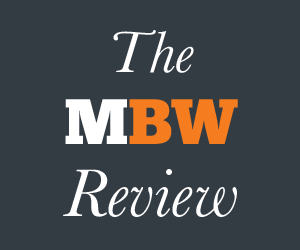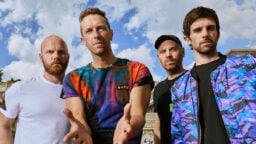
At this point, it’s completely natural and common to question the rationality of signing an old-school, major-label deal. The insurgence of self-serve tools for creating, distributing and marketing music has dramatically expanded the number of ways artists can structure their recording businesses today.
But this doesn’t necessarily mean labels in general are “dead,” irrelevant or trivial in the public eye. In fact, in this streaming-dominant era, labels may be more in vogue than ever.
One surefire, if controversial, sign: almost every kind of corporate brand wants to start one.

It’s nothing new that all sorts of companies within the music industry are now encroaching on label territory. Symphonic Distribution is releasing its own compilations. Amuse and JioSaavn are signing artists directly to single deals. Artist-management companies like SB Projects and Th3rd Brain have opened their own in-house labels in order to capture a larger pie of recorded-music revenue for themselves.
But activity outside of the music industry is just as fervent. Since the early 2000s, over 15 corporate, non-music brands — with a collective annual revenue of over US$352 billion — have tried to run their own record labels.
“Since the early 2000s, over 15 corporate, non-music brands — with a collective annual revenue of over US$352 billion — have tried to run their own record labels.”
Nearly a dozen corporations have done so in the past three years alone. A non-exhaustive list: In 2016, fashion brands Steve Madden and VFILES founded their own labels (5Towns Records and VFILES LOUD, respectively).
Then in 2018, W Hotels launched its singles label W Records, United Airlines commissioned and released four covers of George Gershwin’s Rhapsody in Blue on Spotify and film veteran J.J. Abrams’ production company Bad Robot Productions established its in-house label, Loud Robot.
And so far in 2019, Build-A-Bear has launched its own label Build-A-Bear Records in partnership with Warner Music Group and Warner/Chappell, while Malaysian budget airline AirAsia just launched RedRecords in partnership with Universal Music Group, focusing on rising artists in Asian pop.
How did we get here, and why is there suddenly so much activity in what is ultimately a high-risk business?
The concept of a brand-backed record label originated at least 15 years ago, when Toyota founded its in-house label Scion A/V in 2003.
The auto giant’s two-pronged goal with the label was quite similar to those of its successors. Firstly, establishing a label could help Toyota expand its music strategy beyond just commercial syncs and one-off artist endorsements, by pursuing both intellectual property ownership and long-term funding in underground acts’ careers.
Secondly, the hope with these kinds of initiatives in general is that music’s emotional appeal serves as a sales driver for an aspect of a company’s core, non-music business. In Toyota’s case, this was the struggling, eponymous Scion car model.
Unfortunately, even the coolest music couldn’t keep the wheels running: the Scion model and record label both shut down in August 2016.
But inspired by Toyota’s early moves, there was an unusually high amount of activity in the brand-as-label sector around 2007 and 2008, during which Starbucks, Red Bull, Procter & Gamble and Mountain Dew all started their own labels (Hear Music, Red Bull Records, Tag Records and Green Label Sound, respectively).
At the time, the dominant narrative was that incumbent major labels were laying off staff and slashing recording and marketing budgets in the wake of piracy, carving out an opportunity for corporate brands to step in and support artists’ fledgling careers. Deckstar Management co-founder Matt Colon told Billboard that as far as music-funding companies went, “there’s only a handful left standing, and they’re alcohol companies and energy drinks.”
“Aside from Red Bull Records, none of these aforementioned brand-backed labels are around anymore.”
But that also wasn’t entirely accurate — because aside from Red Bull Records, none of these aforementioned brand-backed labels are around anymore, either. Unsurprisingly, bottom lines that aren’t music-oriented end up chasing non-musical priorities.
Weirdly, it seems that virtually no major brand tried to launch a record label between 2008 and 2016 (except Hard Rock Records, which lasted from 2012 to 2015). There are a handful of economic factors that could explain this gap, from the wider 2008 financial crisis to a more specific shift in music formats. Digital music sales surpassed physical sales for the first time in 2013 — the same year that annual revenues in the global recording business hit $14.2 billion, its lowest point in over 20 years.
But then activity in the brand-as-label world picked back up in 2016, and has been accelerating ever since. And this time around, the narrative is completely different.
Corporate brands starting their own labels used to be seen as “saviors” slapping a last-resort band-aid onto the festering wound that was our piracy-ridden music economy.
Today, streaming not only dominates music consumption, but has also flushed the aggregate recorded-music business with newfound growth — and, for some major labels, mid-eleven-figure valuations. In this environment, outside brands are no longer leaders; they’re playing catch-up, and are racing to capture their own share of this bigger and much more competitive pie while it’s still hot.
“In this environment, outside brands are no longer leaders; they’re playing catch-up.”
While each corporate brand takes a slightly different approach to building out its label, many of them share a handful of common traits.
For example, nearly all labels founded by corporate brands end up releasing only one-off singles, rather than longer albums or EPs. This mirrors a wider shift that has taken place at major labels over the past several years, away from rigid multi-album contracts and towards more flexible, non-exclusive single deals.
The singles approach also makes sense for a corporate brand looking to mitigate risk with something as unpredictable as monetizing new recordings; it takes much less upfront investment to support one track, versus ten or fifty.
A second pattern among brand-backed labels is that very few of them have their own websites or social accounts. This insinuates that such labels are not necessarily intended to have their own independent audiences, but rather are built explicitly to drive sales of their umbrella brand’s core business, be that cars, soft drinks, hotel rooms or stuffed animals.
Just like a branded podcast, the music that comes out of a branded record label is first and foremost content marketing. You can tell as much by who exactly within the brand is running these labels behind the scenes. For example, Hard Rock Records’ “co-heads of A&R,” James Buell and Blake Smith, were also directors of brand marketing at the much larger Hard Rock parent company. Similarly, W Hotels enlisted marketing agency Giant Step to launch and co-run W Records, as a way to “bring all of [W Hotels’] music initiatives together under one mission-driven brand.”
A third, crucial commonality among many brand-backed labels is an administrative partnership with an incumbent label or distributor — often with a major.
For instance, while they were still around, Starbucks’ Hear Music partnered with Concord Music Group, and Procter & Gamble’s Tag Records was an imprint of Universal’s Def Jam Recordings. As for currently-active labels, Loud Robot partners with Capitol Music Group on distribution, W Records distributes through AWAL and Riot Games releases its entire musical catalogue through FUGA. Red Bull Records has also been running a music-publishing joint venture with Taylor Swift’s former label Big Machine since 2016.
This particular trend reveals important insights about the positioning both of major labels and of their corporate, non-musical counterparts.
If you ask any industry veteran why a given artist should still sign with a major label in this day and age, their answer will likely allude to the monopoly that majors still have over the mass-market promotion and distribution networks that can help an artist achieve truly global stardom (read: TV and radio). That value proposition may also be also similar for a corporate brand: majors can offer global networks, resources and expertise to brands that don’t have the proper expertise to achieve the same outcome on their own.
But this also reveals an important Achilles’ heel of the label world in general — whose members increasingly provide back-end finance and administration support, rather than standing as recognizable, consumer-facing brands on their own.
“Majors can offer global networks, resources and expertise to brands that don’t have the proper expertise to achieve the same outcome on their own.”
As Phillip Cartwright and Françoise Passerard, professors at the Paris School of Business, argued in a recent article for The Conversation, labels “have become removed from the consumer awareness and now mainly serve as financial and marketing companies,” as artists rather than labels have now become the primary brand of relevance on album covers. “We observe a shift from the label as having a highly visible business-to-consumer (B2C) function to something closer to business-to-business (B2B) or even business-to-artist (B2A),” wrote the authors.
While this shift seems like a liability on the major label’s part, it could also be an important trend for the majors to latch onto in order to be positioned as an ally, rather than merely a competitor, in this new brand-backed label ecosystem.
Some of you may be thinking that these corporate brands don’t stand a chance against more traditional label setups, because the former know next to nothing about A&R.
But even if some brands aren’t artist-development experts, they do have other key competitive advantages over the incumbent music industry. One such advantage is physical distribution infrastructure.
For decades, corporations have leveraged their physical real-estate footprints to nail exclusive music-distribution deals, without acting as “labels” per se or signing copyrights away from artists.
“Even if some brands aren’t artist-development experts, they do have other key competitive advantages over the incumbent music industry.”
Perhaps the most notable example of this is retail giant Wal-Mart, which partnered with the likes of Journey, Garth Brooks and The Eagles in the early 2000s on exclusive distribution deals for new releases — often working without the help of an existing record label to get the job done. Such deals helped Wal-Mart retain its reign as the top music retailer in the U.S. until 2008, when the iTunes store took away the crown.
Similarly, in October 2009, fashion conglomerate L Brands (Victoria’s Secret, Bath & Body Works, Justice, etc.) partnered with K-pop group Wonder Girls to sell remix CDs of their hit single “Nobody” exclusively in 800 Justice locations across the eastern U.S., for just a dollar apiece.
The only major obstacle is that physical formats are on an ongoing decline today, making it difficult for brand-backed labels to use their physical real estate specifically for recorded-music sales. But that doesn’t mean there isn’t still a market opportunity in that area, especially in international music economies: for instance, KFC Indonesia is reportedly selling 600,000 records every month, in the form of “CDs bundled with chicken.”
Moreover, brand-backed labels nowadays tend to devote their physical real-estate networks more to live experiences and behind-the-scenes collaborations instead.
“At best, these kinds of partnerships can be powerful forms of affinity marketing.”
For example, when Hard Rock Records was still around, the label gave its signings ample performance opportunities across Hard Rock’s restaurant, hotel and casino properties. W Hotels uses its hospitality footprint not to “sell records” per se, but rather to stage destination music festivals and offer exclusive recording space for hotel guests and W Records artists. And League of Legends gives its artist-partners the opportunity to perform in front of tens of thousands of fans at its global championship tournaments.
Another competitive advantage for brand-backed labels is deeper, more direct insight into consumer behavior across different entertainment formats. At best, these kinds of partnerships can be powerful forms of affinity marketing — i.e. introducing two or more different kinds of companies or industries to entirely new audiences through a mutually beneficial partnership.
For example, League of Legends has formed two separate musical groups — K-pop-inspired K/DA, and hip-hop-leaning True Damage — consisting of real-life artists impersonating some of the game’s most popular characters in song. While their output might be musically interesting, these bands also exist for the purpose of helping LoL to sell new in-game “skins,” which players can purchase for their avatars to wear for around $10 to $15 each.
For the group True Damage in particular, their branded skins were designed by Louis Vuitton — signaling a triple threat in affinity marketing spanning music, gaming and fashion.
A third competitive advantage for brand-backed labels is the relative diversity of marketing and creative resources they are able to commit, compared to a traditional, music-focused label.
One of the most compelling recent examples of this advantage is Loud Robot’s support of upcoming R&B artist UMI for her EP Love Language, which was dropped “episodically” and released through the J.J. Abrams-backed label.
For each single on the EP, UMI released a separate short film on YouTube that built a narrative atop the song’s lyrics, with a vivid aesthetic that combined anime and live action. These films dropped week by week, with the fourth and final video publishing on October 30 of this year, along with the full EP.
It makes complete sense that Loud Robot would invest this much in high-quality visual content for its artists, given that its parent company has the resources, the chops and the network to do the job (Bad Robot Productions is officially credited in the descriptions for all of these videos).
With film and TV production in particular, there’s also a strong legal incentive to start a record label in-house: owning part or all of the intellectual property behind a piece of music makes the process of syncing said music into commercials and other video assets much more streamlined. Indeed, in its initial announcement, Loud Robot claimed that while it would remain independent operationally from Bad Robot, it would still have the opportunity to place its music in the latter’s films, TV shows and games.
After considering all of these advantages, though, one important question remains: do brand-backed labels actually work?
That depends on how you define success — which looks quite different for a traditional record label investing in long-term copyrights, versus for a corporate brand chasing short-term impressions and audience awareness.
“Several brands have made the mistake of building out record labels that actually exclude, rather than include, their existing core audiences.”
It’s difficult for a label to impact culture in a meaningful way, let alone sustains a business, if it’s just a content marketing vehicle that is primarily signing singles deals. In general, it’s been proven to be tiresome and expensive for outsiders to battle incumbent entertainment companies head-on, even if they have the proper creative resources in-house. That’s largely why, aside from Red Bull Records, no brand-backed label founded between 2003 and 2012 is still around today.
In addition, several brands have made the mistake of building out record labels that actually exclude, rather than include, their existing core audiences. For instance, according to a New York Times article from 2011, there was a major discrepancy between Toyota Scion’s music-marketing initiatives, which were aimed at consumers aged 18–24 years old, and its actual automotive audience at the time, whose median age was 37.
This gap likely exacerbated Scion’s financial struggles, as sales of the model fell by nearly 75% between 2006 (173,000 models) and 2011 (46,000 models).
Finally, it’s important that brands — or any music company, for that matter — think more deeply about purpose when starting a label, beyond bottom-line incentives alone.
As Matt Brinkworth, Head of Digital at Omniam Music Group, argued for Music Business Worldwide in June 2018: “Independent music is at a place right now where you should only be considering starting a new label if there’s a real necessity and purpose — if a scene, sound or artist(s) cannot grow without your label’s guidance or platform.”
“Some brand-backed labels can make a significant, positive cultural impact on local communities by elevating talent that would not otherwise have a stage to share their work.”
Some brand-backed labels can make a significant, positive cultural impact on local communities by elevating talent that would not otherwise have a stage to share their work. For example, Bike Rack Brewing Company, a microbrewery based in Bentonville, Arkansas, launched a record label in June 2018 in part to help promote the artists who perform regularly at its brick-and-mortar Brew Room Sessions. So far, the label has released two compilations and one “summer mixtape.”
Another purpose-driven approach is to donate a brand-backed label’s profits to charity, such that the venture becomes as much about corporate social responsibility as much as it might be about content marketing. For instance, all proceeds from the releases of W Records are donated to a charity of the featured artist’s choice.
Symphonic Distribution has a similar setup with its label Sleev3s, partnering with a different charity for each compilation based on the featured curators’ passions and interests.
For artists, these kinds of positive collaborations change the whole conversation around “selling out” to a brand. Are artists really compromising their integrity or moral stance, if “signing” to a brand is the only way that they can afford to release their art to the world?
And even if these brand-backed labels rarely succeed in the long run, incumbent labels would do well to start thinking about how to diversify their creative and marketing prowess in order to stay competitive, in the event that one of these multibillion-dollar corporations does end up nailing A&R.
“At large, corporate-branded labels are just a tiny cog in the giant wheel of ongoing transformation that is blurring the boundaries between media and advertising.”
Many labels are traveling in the other direction, expanding beyond recordings into other kinds of non-musical revenue streams. For instance, French indie label Wagram launched a film studio Wagram Stories, focused appropriately on music documentaries; Maison Kitsuné is renowned for expanding from just a record label into a full-fledged fashion brand; Interscope and Roc-a-Fella Records have launched and invested in their own alcohol brands.
At large, corporate-branded labels are just a tiny cog in the giant wheel of ongoing transformation that is blurring the boundaries between media and advertising, between culture and commerce and between music and other forms of entertainment. The companies that can blend all those categories together in the most compelling way to fans will ultimately win out — regardless of whether or not they attack from the music industry first.






